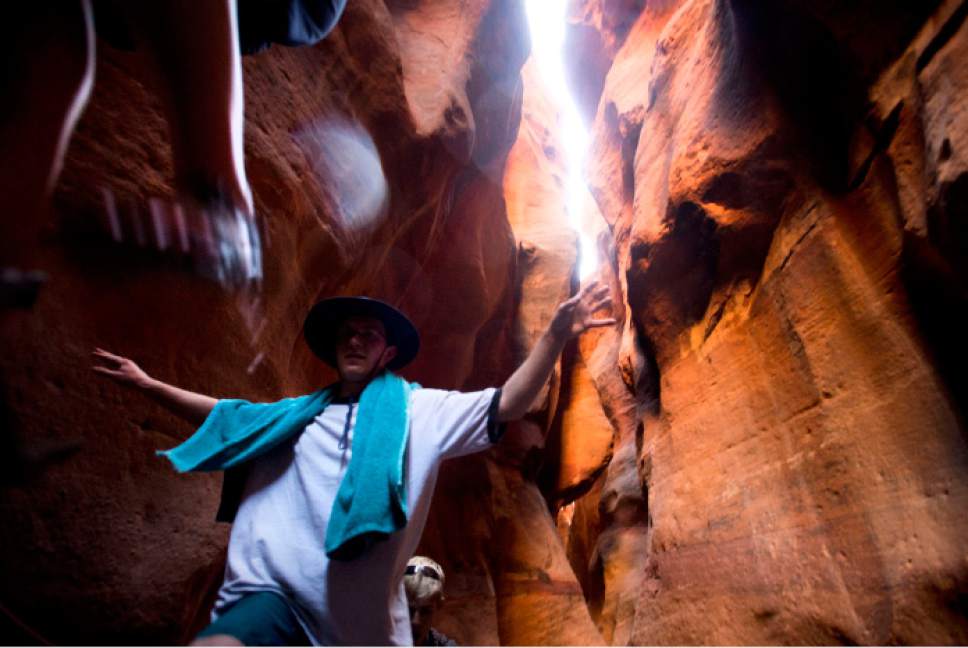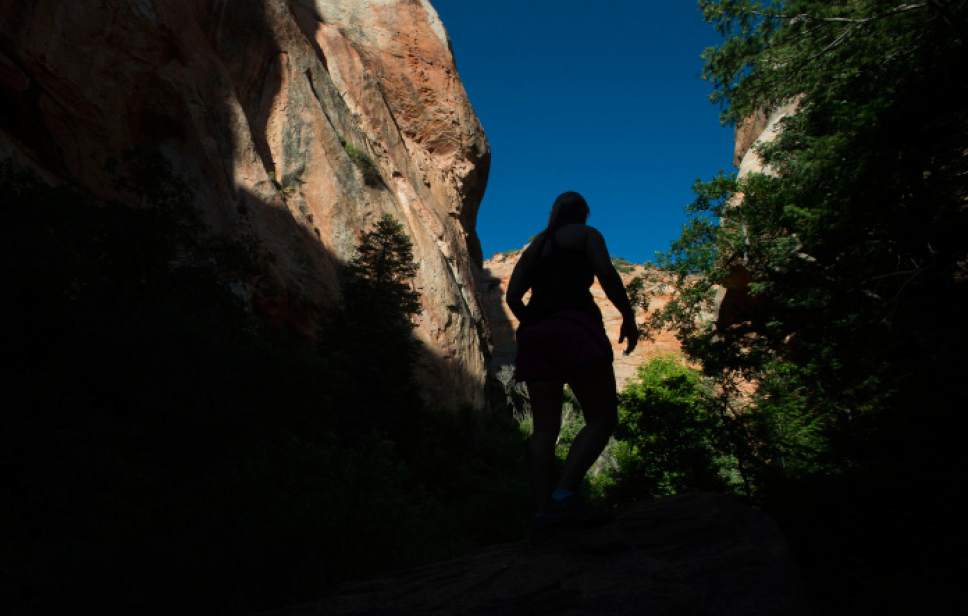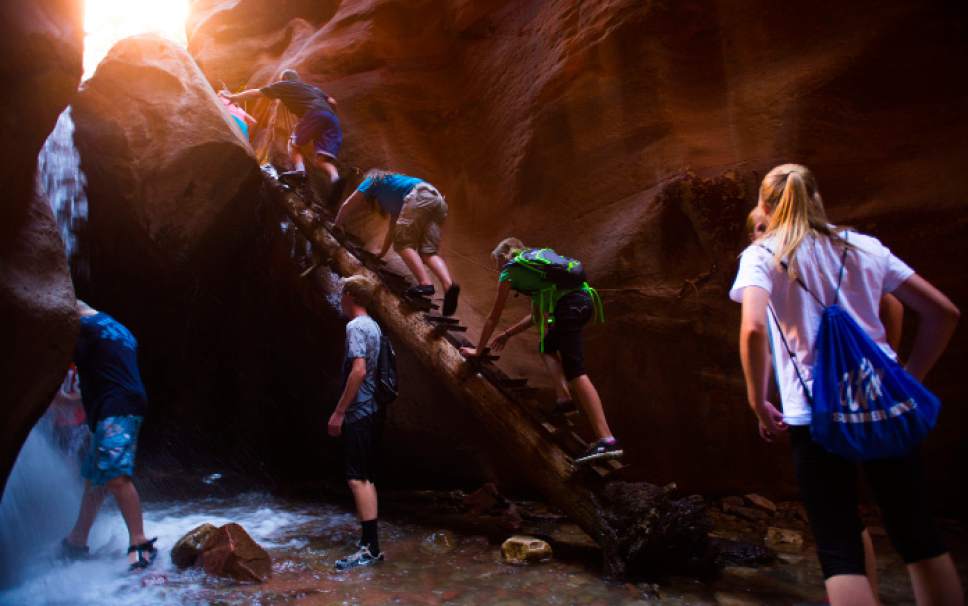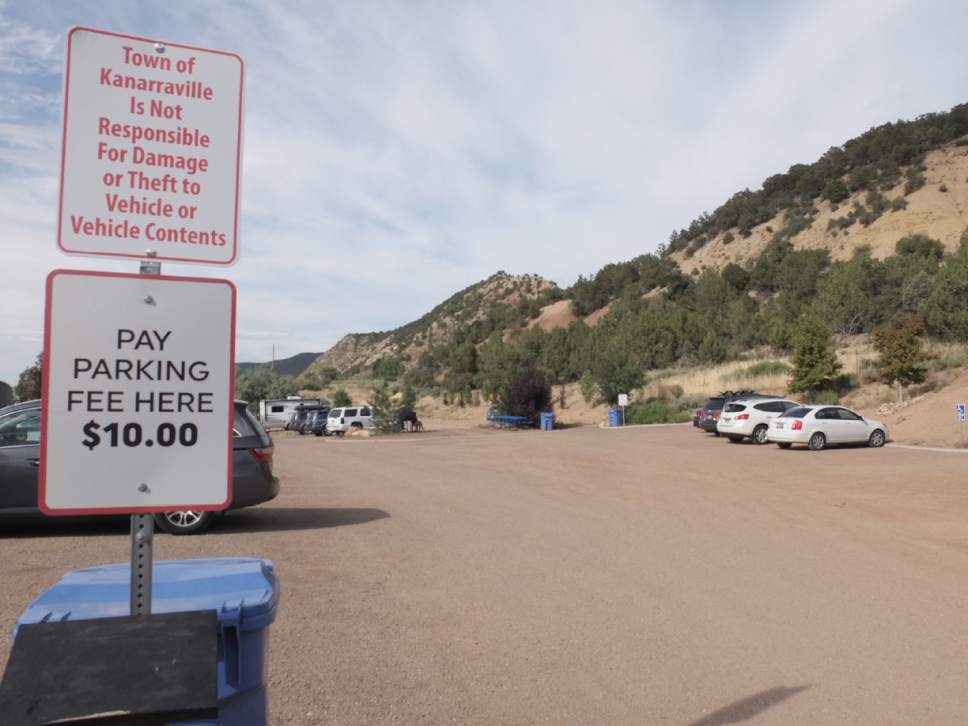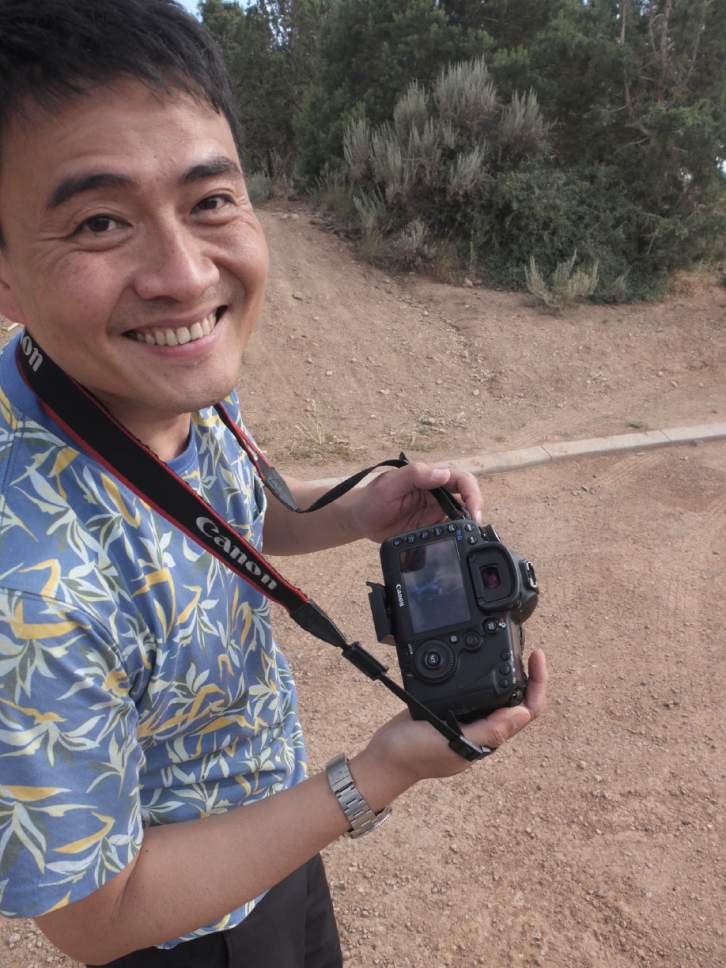This is an archived article that was published on sltrib.com in 2016, and information in the article may be outdated. It is provided only for personal research purposes and may not be reprinted.
Kanarraville • This tiny Iron County town has a big problem that some rural Utah communities would kill for.
Thousands of visitors come here, drawn to an increasingly popular day hike to a slot canyon and waterfalls up Kanarra Creek. But other than a $10-a-car parking area, an RV park and kids' lemonade stands, Kanarraville lacks opportunities to tap these visitors' wallets. The trailhead is easily accessible off Interstate 15 south of Cedar City on Zion National Park's northern boundary. Yet there are no groceries, restaurants, gas stations or shops here.
Kanarraville is a 350-resident town that measures just four by four blocks. Before an ordinance was passed barring on-street parking, visitors' cars would line the streets, annoying those who call this place tucked against the Hurricane Cliffs home.
"That kind of interest is going to have a big impact on a small town. We try to keep everyone happy by providing a place to park and the residents happy with all the people walking up and down the street," said David Ence, the town's administrative officer.
A few years ago, the town developed the parking lot on an acre at the trailhead. It can hold up to 100 vehicles and still fills up on some days.
"It's not paved and striped so people park willy-nilly," Ence said.
Options for managing this area for recreation are limited because the mouth of the canyon, on the east edge of town, is private land. A few years ago, owner Blaine Webber began charging hikers to pass through, but Iron County put its foot down. Officials argued the dirt track up the canyon is a county road, and a judge agreed. This route is among the thousands Utah has gone to court over, seeking the titles to old roads crossing public land.
Webber has expressed an interest in developing his land for housing or a campground, but he now hopes to sell the 41 acres to the Bureau of Land Management, according to an environmental assessment of the proposed sale.
Webber did not respond to a phone message left at his St. George home.
Last April, the BLM received approval to acquire Webber's land with funding from the Land and Water Conservation Fund.
The 2-mile hike to Kanarraville Falls ascends a slot canyon and would be an ideal family hike but for some pour-overs that would be difficult for small children to negotiate. This terrain is in the Spring Creek Canyon Wilderness Study Area, mostly BLM land except for a few sections of state trust lands.
Chris Lee, a 47-year-old amateur photographer from Taipei, Taiwan, learned about the hike online while planning a trip to the American West.
Earlier this month, Lee hiked to the falls, photographing the sculpted canyon walls and falling water. He enjoyed the outing, but he wishes there were better signs directing drivers to the trailhead and real toilets — not portable toilets — in the parking lot.
"The nature itself, don't touch," Lee added.
When he returned to the trailhead at 5:30 p.m., there were still 21 cars in the lot.
According to the environmental assessment, 40,000 people hiked the canyon last year, which puts its visitation on par with Escalante Petrified Forest State Park. That figure is based on data gathered by a traffic-counting technology known as TRAFx, compared with the number vehicles using the parking lot.
Ence believes the BLM undercounted visitors and said a better estimate would be 60,000 to 70,000. Last year, the town collected $67,305 at the parking lot, where visitors put their $10 payment in a metal tube under the honor system, according to Ence. That adds up to 6,730 paying vehicles. Some aren't happy about having to pay, Ence notes, but he believes the system enjoys a 95 percent compliance rate. Visitors may park off-street for free at the town hall and the churches.
The surge in hiking in Kanarra Creek Canyon corresponds with a visitation boom at southern Utah's national parks, largely European and Asian tourists who are drawn to the redrock landscape cut by canyons and plateaus. But Kanarraville's visitors are mostly Utahns, according to Ence.
Because Kanarra Creek offers such an accessible and inviting hike, with superb canyoneering opportunities, it will likely draw more and more visitors. BLM ownership of the canyon's entrance would enable the agency to provide recreational amenities here, such as a campground and a picnic area, according to the environmental assessment.
The BLM is appraising the Webber property and a draft assessment is out for public comment through July 21.
For conservationists, the deal highlights the importance of the Land and Water Conservation Fund (LWCF), a 50-year-old program that taps federal offshore mineral royalties to acquire national park and wilderness inholdings and other private lands with conservation and recreation values.
"It is the least known, but best-loved program the federal government has because everybody loves parks and access to those resources," said Brian O'Donnell, executive director of the Conservation Lands Foundation.
Yet the LWCF remains chronically underfunded and came close to termination this year under pressure from Utah Rep. Rob Bishop, who heads the House Natural Resources Committee. Congress wound up reauthorizing the fund, but only for three years and at half its full funding. At $450 million, this year's appropriation is still a big increase over previous years.
Kanarra Creek Canyon is among the first acquisitions approved since the fund's reauthorization. Other Utah places eyed for public acquisition under LWCF are Pole Canyon outside Tooele, Ogden's Waterfall Canyon and areas along the Colorado River outside Moab.
Twitter: @brianmafflyBrian Maffly covers public lands for The Salt Lake Tribune. Maffly can be reached at bmaffly@sltrib.com or 801-257-8713.
Twitter: @brianmaffly








